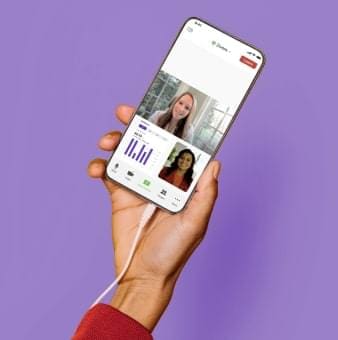The Case for Physical Activity with GLP-1 Coverage

Behavior support Movement Weight-loss medication
Employers are feeling the pressure due to rising health-care costs – and with good reason. With obesity rates rising and prescription expenses growing, health-care costs are expected to grow by 8% next year. Meanwhile, an immense spotlight has been on GLP-1 medications – with employees wanting to lose weight and employers wanting to reduce the risk of costly chronic conditions. But with their significant cost, employers face a challenge in managing them wisely. For those who do cover GLP-1s—and even those who don’t—an integrated approach that combines lifestyle changes, especially physical activity, can be a game-changer. By weaving in exercise, employers can support healthier outcomes, mitigate costs, and provide a comprehensive foundation for sustainable health improvements across their workforce.
The GLP-1 + Physical Activity Connection
Glucagon-like peptide-1 receptor agonists (GLP-1s) were initially developed to help people with type 2 diabetes by reducing appetite and managing glucose levels. Over time, they’ve also become popular for their effectiveness in supporting weight loss. However, there’s a downside: GLP-1s can lead to muscle loss, which may slow down metabolism and reduce some of their long-term health benefits. This is where physical activity—especially strength training—plays a crucial role. By preserving muscle, physical activity helps maintain a healthy metabolism, making weight loss achieved through GLP-1s more sustainable.
The Case for Physical Activity in Wellness Programs
Promoting physical activity alongside GLP-1 treatments supports a more holistic approach to employee health. And it isn’t just good for employees—it’s good for business. Active employees tend to take fewer sick days and have fewer long-term health issues. A strong wellness program with support for exercise also makes a company more appealing to job seekers and helps with retention. Data backs this up. Research published in the Journal of Occupational and Environmental Medicine shows that workplace fitness programs often lead to lower medical claims and less absenteeism. This makes for a clear return on investment for employers.
Steps to Encourage Physical Activity
Employers looking to support physical activity, especially for employees on GLP-1s, can:
1. Integrate Muscle-Building Activities into Wellness Programs
Design wellness initiatives that promote muscle maintenance, such as programs with a focus on strength or resistance training. Ensure these programs include options like weight-lifting tutorials, resistance band activities, or even bodyweight exercises employees can do at home.
2. Include Professional, Personalized Fitness Guidance
Ensure your program/s include qualified fitness professionals who can provide options for different fitness levels and lifestyles. On-demand accessibility, personalized plans, and professional guidance can empower employees to pursue physical activities confidently and consistently.
3. Offer Virtual Fitness Options for Convenience 1s
Provide a range of virtual options that employees can join from anywhere. By offering short, on-demand videos, employees can fit exercise into their schedules more easily. Consider including options for all fitness levels making movement accessible for your entire population.
4. Educate Employees on the Benefits of Physical Activity and GLP-1s
For employees taking GLP-1s, provide education \to help them understand how these medications work and the importance of pairing them with physical activity to reduce side effects like muscle loss and achieve sustainable results.
5. Encourage a Culture of Movement
Foster an active workplace by organizing walking meetings, promoting fitness challenges, or offering standing desks. Consider providing wellness stipends or reimbursement for gym memberships, sports equipment, or fitness apps to further support employees’ fitness goals.
6. Prioritize Accessibility and Inclusivity
Ensure physical activity options are accessible for employees of all abilities and fitness levels. Consider solutions that offer adaptive exercise options for those with unique needs, making fitness achievable for everyone.
A Practical, Sustainable Approach is the Way
Offering resources to encourage movement and strength training for your employees who are taking GLP-1s will help them reduce side effects while improving their overall health, ultimately helping you to manage health-care costs more effectively. Now is the time to consider integrated wellness solutions that can boost both individual and organizational health.





